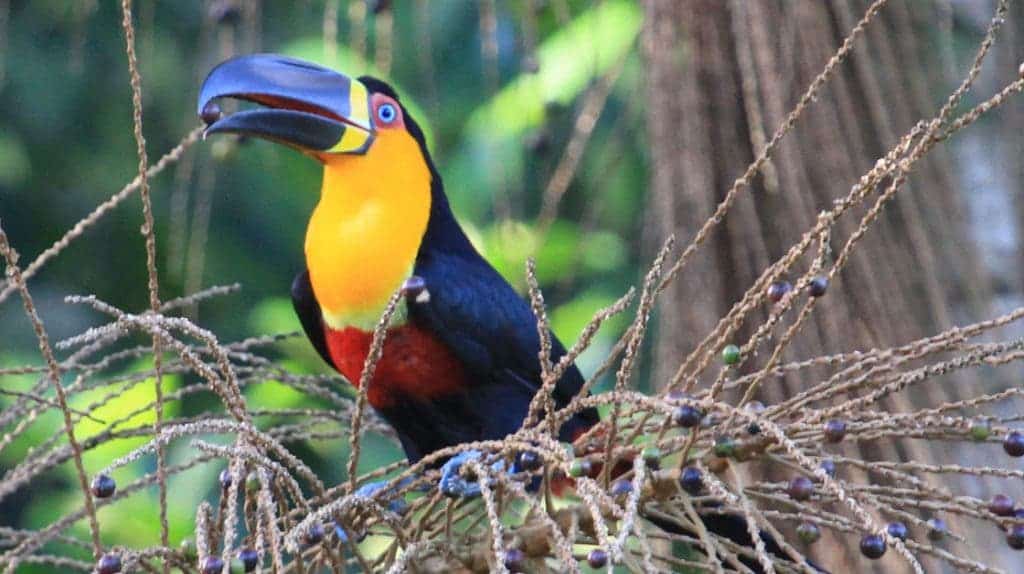
The Brazilian rain forest is a home to a slew of birds of all shapes, sizes and coloring – some 1,700 species to be more precise. One of such bird is the goofy looking toucan, which can be easily recognized by its extremely long beak which can reach half the size of the bird’s body. Human intervention in the area through deforestation, hunting, farming and other pesky activities have led to a loss of habitat for many inhabitants of the rain forest. Scientists studying these effects have recognized a number of consequences, most of them dire, but a recent study hints yet again how intertwined everything is in an ecosystem, especially as vast as the Brazilian rain forest.
The forest’s dominant palm tree is the jucara (Euterpe edulis), which comes in two major varieties: one that makes small seeds, the other makes big seeds. To spread, grow and repopulate the forest, the jucara relies on birds who eat the seeds and then defecate them through out the woods, which then grow into new trees after germination. Its the toucans who give jucara palms with large seeds a reproductive edge and, most importantly, they’re the only ones that can. The marble-sized seeds are too big for any other bird other than the jucara to swallow. So as the toucans disappeared, the palms that made big seeds were out of luck — no seed dispersers.
“The extinction of large birds changed the evolution of this palm,” says Mauro Galetti, a biologist at the Estadual Paulista University in Brazil.
How can they be sure? Well, the researchers first ruled out other possibilities for the decline in large seed jucara, like soil quality or other seed dispersion, but the evolutionary change was too strongly correlated with areas where toucans were scarcest to ignore.
So, what just happened? Yet again, humans, through indirect action, altered the genetic makeup of a wild palm tree population in a mere century. This wouldn’t be such a big deal, though, if the small seed jucara were actually better than the large seed jucara. They dry up and die faster than big ones in hot, dry weather, and as rain forest heats up, many parts of Brazil’s rain forest will become ever hotter and drier, which could yet again trigger events in the chain that might further amplify damage.
“The impacts on the forest could be quite dramatic because several animal species … rely on this palm for food,” Galetti said.
Findings were reported in the journal Science.



